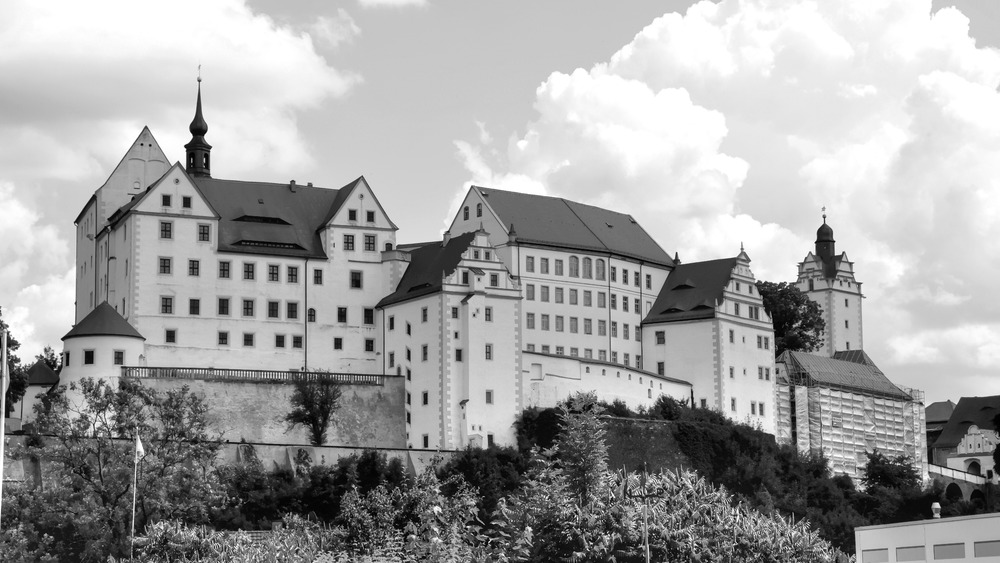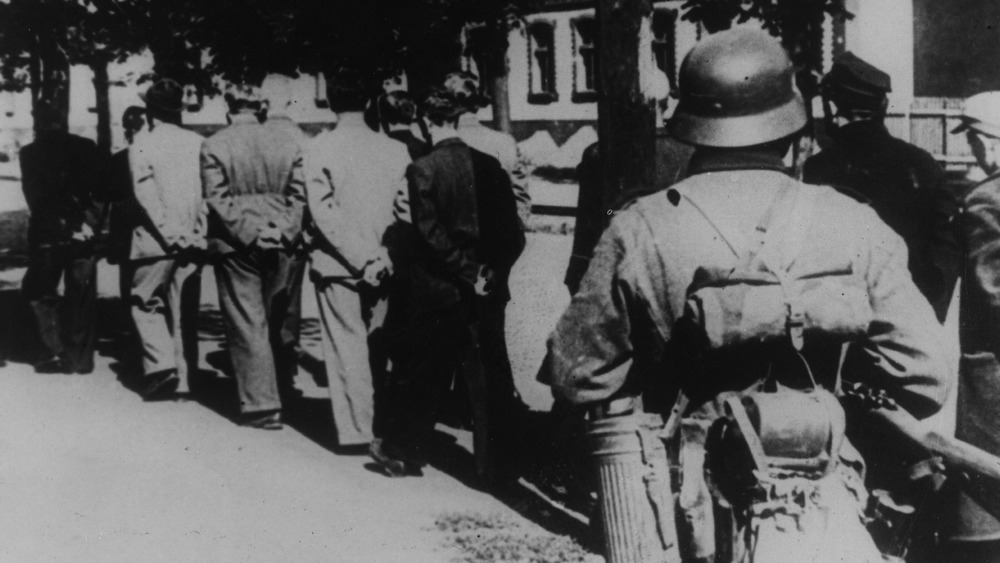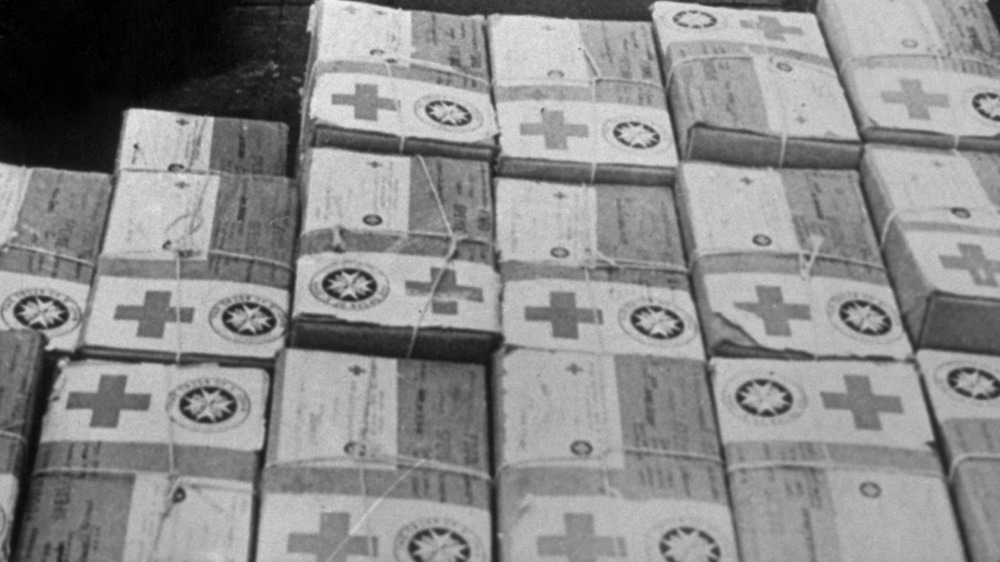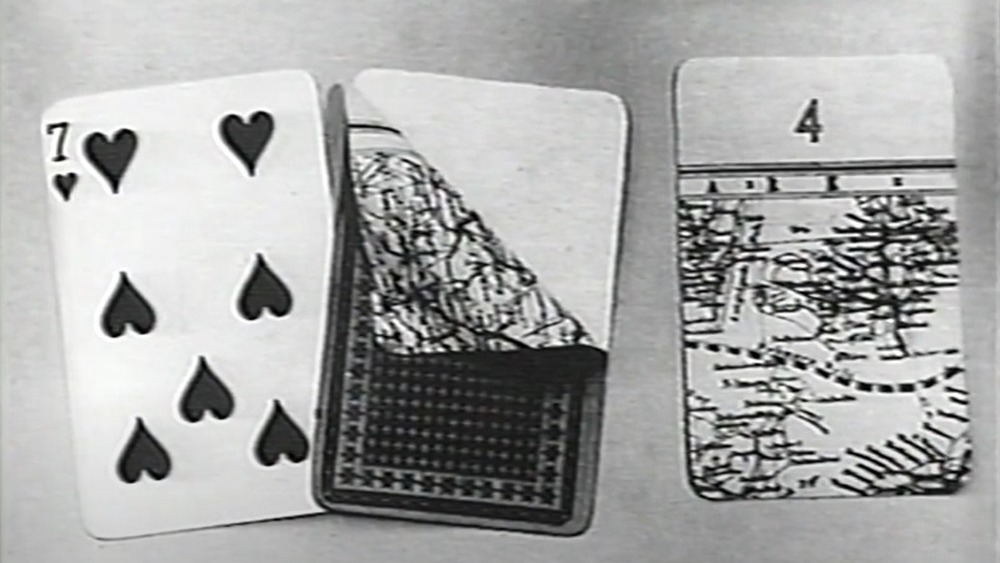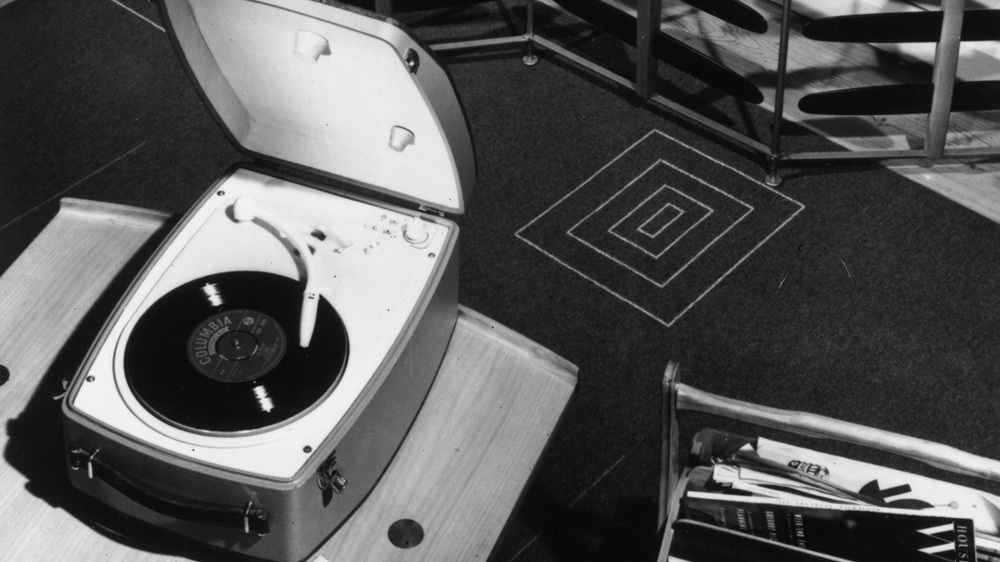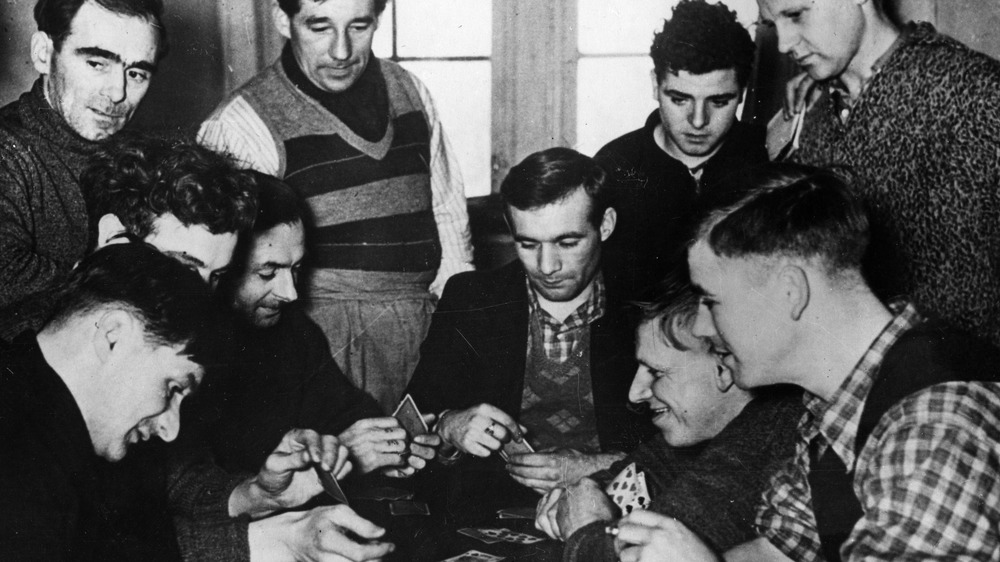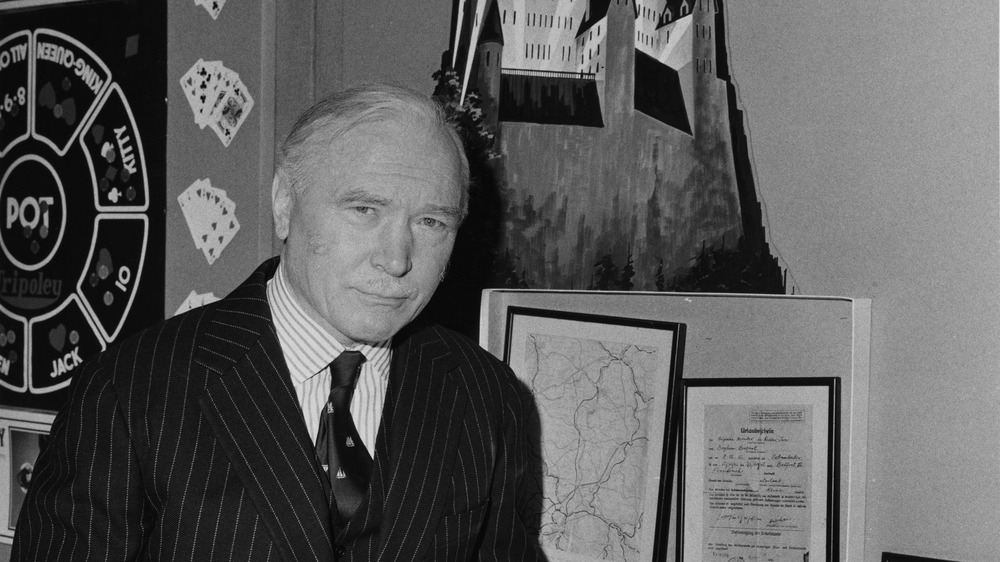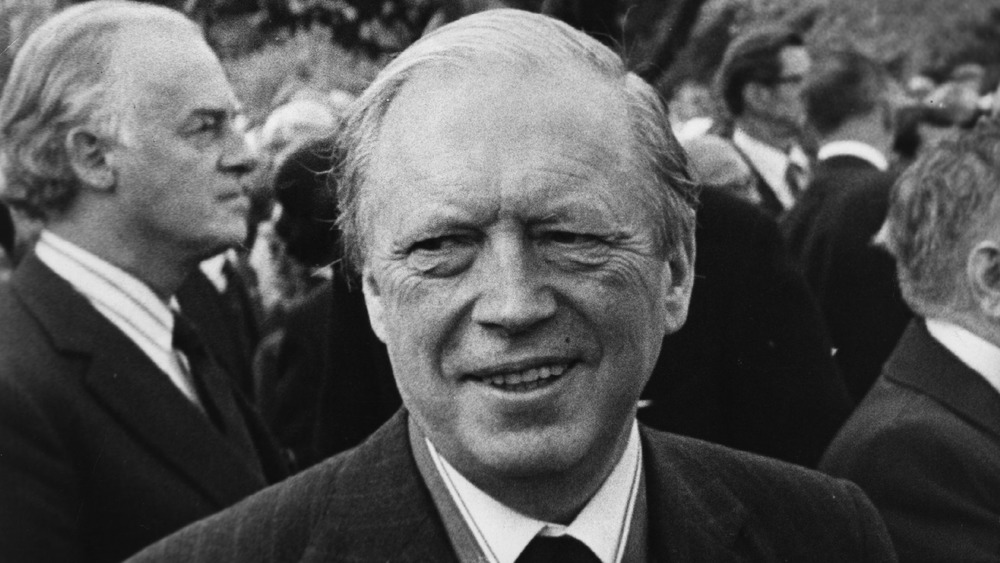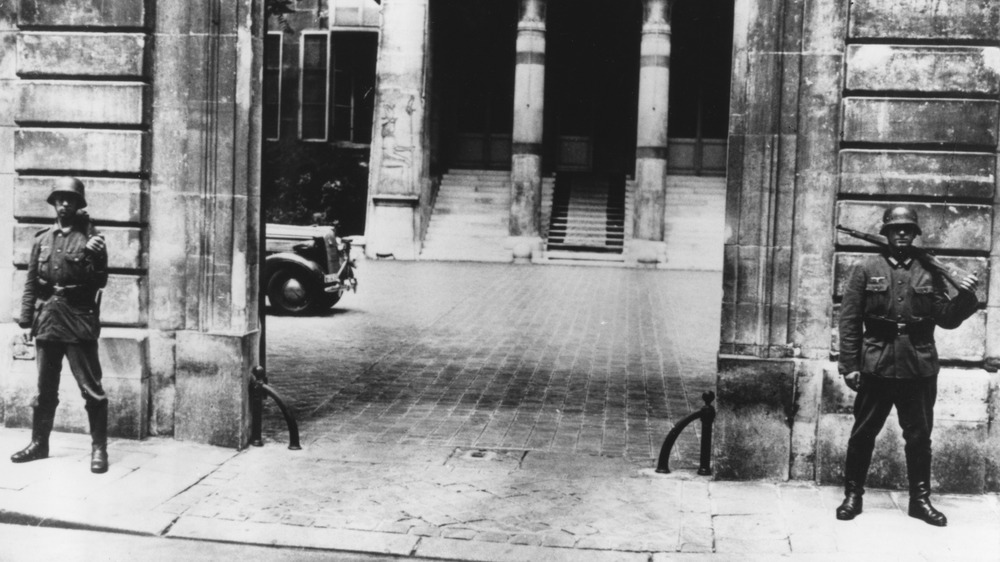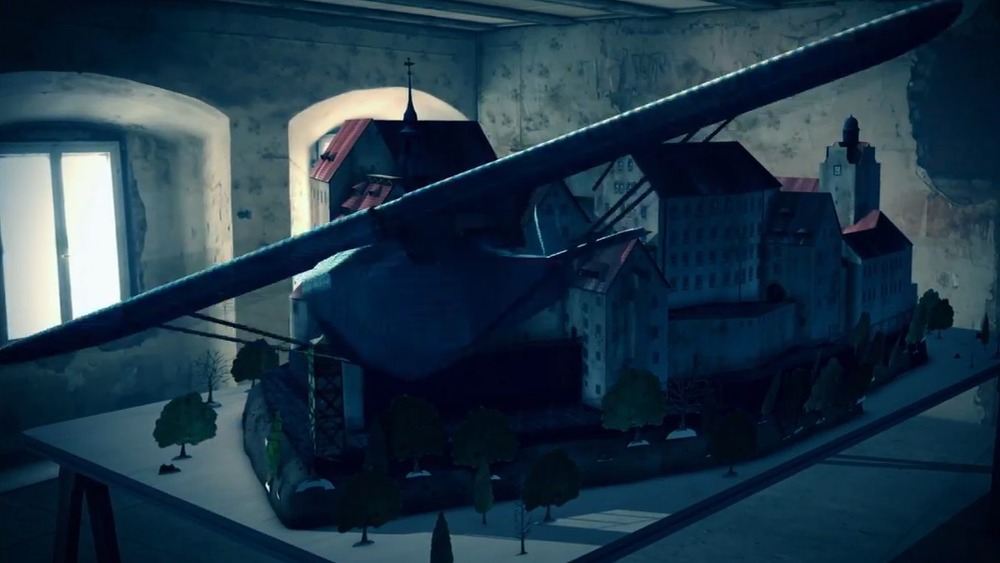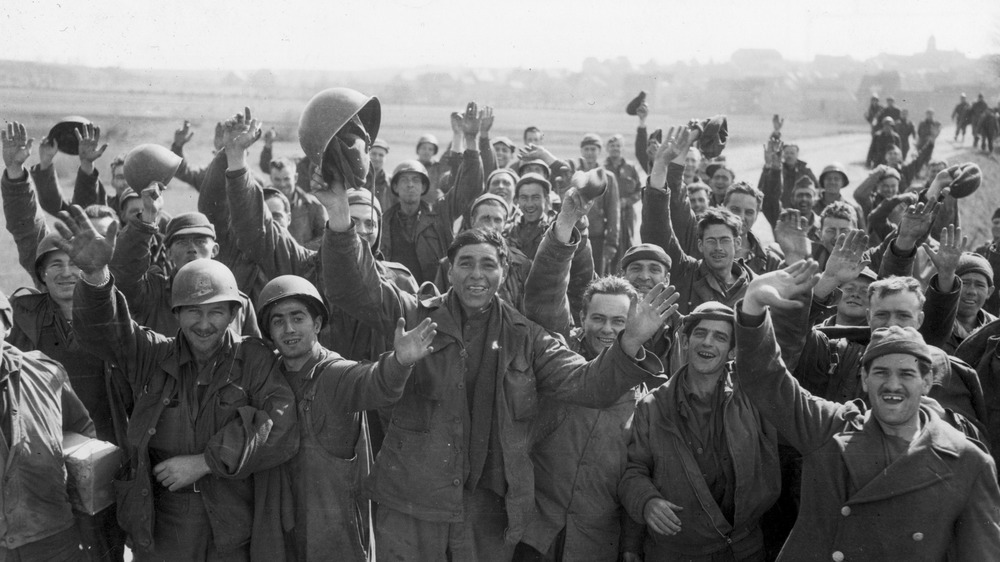The True Story Of The Christmas Present That Saved POWs During World War II
During World War II, Allied soldiers who were caught by the Nazis became prisoners of war (POWs) and were placed into prison camps. Conditions were harsh, and many longed to get back to the war or head home. It's likely all POWs dreamt of escape, and it's known that many tried, but only a small number were able to make it to freedom, known to POWs as "home runs." There are a handful of iconic escapes from WWII, such as The Great Escape and The Wooden Horse. However, there were also many clever attempts made from a prison, known as Colditz Castle.
The castle was known for its size and enduring strength, as well as its location. Those looking to escape would have to travel 400 miles before reaching any location not under Nazi control, as per Yesterday. It was also known for being the one prison that housed POWs who had previously tried to escape other Nazi prison camps, and as you can guess, many attempts were made. According to We Are the Mighty, at least 32 people escaped from Colditz Castle among 316 escape attempts. And in order for the Allied POWs to escape, they would rely on the support of American and British intelligence agencies and the Red Cross to help them. On Christmas Day, their tools would arrive, along with their hopes of freedom.
The history of Colditz Castle
Before becoming a prisoner of war camp during World War II, Colditz Castle had many different uses. The enormous castle was built during the 11th century at the request of King Henry IV to serve as a watchtower for the German monarchy, as per Yesterday. It was later rebuilt in 1504 after a fire destroyed most of it. From 1553 to 1586, it was converted to a Renaissance-style castle while under the rein of the elector Augustus of Saxony. Throughout the next few centuries, the castle would deteriorate until being converted to a workhouse for the poor and those under arrest. By 1829, it was changed again to a mental hospital for the "incurably insane."
By World War I, Colditz Castle was converted to a prisoner-of-war camp. However, between 1933 and 1939, it served as a political prison. By the start of WWII, the castle was transformed back to a prisoner-of-war camp where it would house Allied soldiers. Those who entered the castle were faced with trying to escape a structure that had endured for centuries. Hitler considered Colditz a symbol of German strength, where it was known as Oflag, an abbreviation for Offizierslager, which is German for "officers camp."
The first POWs to enter Colditz Castle
By November 1939, Polish officers known as "escape risks" were the first POWs brought into Colditz, as per Yesterday. By Christmas 1940, the Nazis imprisoned 60 Polish officers, 50 French, 12 Belgians, and 30 British officers. In Nazi Prison Escape, a PBS documentary on Colditz, former POWs said they were unaware of where they were being taken. U.S. Army Pfc. Justin L. Bloom said, "My recollection is, we didn't know what was at Colditz. It was just a place on the map." As they arrived, Nazis would greet them, saying, "For you the war is over."
While their maddening greeting was true, for the Allied POWs being brought into the prison, it was only the beginning of a psychological war they would wage on Nazi prison guards that comprised numerous attempts to escape. All the incoming POWs at Colditz had tried to escape other prison camps. Once brought to Colditz, many of them looked at it as just another challenge.
Allied POWs were allowed to receive mail and packages from the Red Cross
Allied POWs were allowed to receive mail and packages from the Red Cross as long as they didn't contain any weapons, as per War History Online. According to History Extra, the parcels, each weighing ten pounds, contained tins and packets of cheese, margarine, milk, biscuits, chocolate, tea, and tinned meat. These foods helped nourish the POWs, helping the POWs captured in the beginning of the war to survive. POWs were also given socks, sewing equipment, underwear, and fresh uniforms from the British and commonwealth governments. One of the most helpful items they received were the ones used to keep themselves busy, such as playing cards and board games.
When news of the D-Day landings in June 1944 reached the camps, POWs were hoping the war would be over by Christmas. As the war progressed, and the German infrastructure slowly collapsed, fewer Red Cross parcels made it to the camps. This made their time as POWS much harder and the need to escape escalate.
The USPCC teamed up with British and American agencies to create escape cards
Since POWs were allowed to receive Red Cross parcels, Allied intelligence agencies were able to seize an opportunity to help them plan more accurate ways of escaping the camps. According to Bicycle, the United States Playing Card Company (USPCC) teamed up with British and American intelligence agencies to create "Map Decks" — a deck of cards that was used to help Allied prisoners of war escape. In the PBS documentary, Nazi Prison Escape, military historian M.R.D. Foot said, "You might get sent a pack of cards. If you drop them into water, the card peels off. And if you put 52 of them together, you've got a very good map of Germany, probably with the Swiss frontier thrown in."
No one knows how many were produced or how many have survived since the war. They were of great secrecy and one of the best gadgets used by Allied prisoners. As of now, there are two decks stored at the International Spy Museum in Washington, D.C. We Are the Mighty reported that the map decks helped 32 POWs escape Colditz Castle among 316 attempts.
British Intelligence agencies' other creative escape gadgets
POWs were also sent pencils with a clip on them that contained a compass and board games with concealed German money. According to the Royal Air Force Museum, MI9 also made combs with razors imbedded in them, and the company HMV used actual records to conceal maps and money. In Nazi Prison Escape, military historian M.R.D. Foot talked about the iconic escape records, saying, "MI9 had an arrangement with HMV that HMV could cast a record with a map inside it. And word would go in by coded letter — when a record played and the British Grenadiers arrived, drop it."
Jock Hamilton-Baillie, a former Colditz POW said of the records, "Somebody dropped one and it broke, and there in the middle of it was a map, a very thin map. And people said, 'Oh, goodness.' And it was an orgy of breaking all our very precious gramophone records, seeing if there was (sic) any other maps. There were no other maps and we had broken all our records, which was rather sad." POWs would be awaiting such items mostly on Christmas, boosting morale, giving them hope, and equipping them with more ways to secretly flee Colditz Castle.
Christmas in Colditz
During Christmas, POWs would make dinners from their Red Cross parcels. Many POWs would also make their own alcohol, or "Jungle Juice," using sugar, yeast, vegetables, fruit, jam, and raisins. Good batches of jungle juice were able to get the POWs drunk from Christmas Eve to Boxing Day, as per History Extra. They would also receive the parcels containing items such as map decks disguised as playing cards, board games, and other gadgetry, which they would use to escape.
While POWs would partake in Christmas activities, their minds would still be at work, thinking of ways to escape using the items they'd received. In the PBS documentary, Nazi Prison Escape, during a cold winter night in December, POW Bill Goldfinch watched the snowflakes as they were falling, studying how the wind carried them up and over the castle. It would later lead to an ingenious idea behind one of the most exciting escape plans during the war.
The Escape Committee
While the POWs had maps to find their way out, they also needed to figure out ways to escape the prison. As individuals, the POWs would spend their time thinking of ways to escape and would try almost anything, such as climbing over the fences — very few attempts were successful. They knew they would need to organize and work as a team in order to increase their chances of more home runs. POWs could use all their different skills and combine them, and they could form lookouts and keep watch while others worked on different ways to escape.
In order to achieve this, the POWs created an Escape Committee. Former POW and engineer Pat Reed was selected as the head of the committee. In the Nazi Prison Escape, POW Kenneth Lockwood said, "He was an automatic choice really. You know, if you thought of an idea you'd go to Pat. And of course it was the fact that he was a civil engineer, which was invaluable." Soon, the POWs would begin working together and making better attempts to make it home for Christmas.
The first POW to escape Colditz
Prior to the Escape Committee, other POWs managed to escape the prison camp. According to PBS, the first POW to escape Colditz Castle was French Lt. Alain Le Ray, on April 12, 1941. Le Ray was captured after the German invasion of France in 1940, as per the LA Times. After a daily walk to the park, Nazi guards soon learned of a missing prisoner after a head count. After checking all the POWs according to their photo identity cards, they realized it was Le Ray. During a soccer game, the daring POW hid in a cellar of a house, which stood along the park path.
"I was sure they would see me, but there were no shouts, no chase, no dogs," Le Ray told the London Daily Mail in 2001, as per the LA Times. He wore homemade civilian clothes under his uniform and waited until dark. He then climbed over a wall and fled to the woods. After traveling hundreds of miles, Le Ray reached Switzerland, making it the first home run from Colditz.
Airey Neave: the first British POW to escape
British Army Lt. Airey Neave was another famous POW to escape Colditz Castle. According to the National Archives, after the fall of France in 1940, Neave was one of tens of thousands of British and Commonwealth personnel to be captured at the French ports. Neave was wounded and taken to Stalag XXA near Thorn in Poland. In April 1941, he escaped with another POW but was captured again and brought to Colditz. Neave, determined to make it home, tried to escape Colditz. After a couple attempts and getting caught, Neave and a Dutch POW, both dressed as German officers, were able to escape on Jan. 5, 1942, as per The Bruges Group.
After coming home, Neave eventually worked as an intelligence agent for MI9, who had helped him escape. He would go on to serve with the International Military Tribunal at the Nuremberg trials in 1946. According to The Times, Neave also worked as a member of parliament and an advisor to Margaret Thatcher. In March 1979, Neave was killed when a car bomb exploded while leaving the Palace of Westminster car park.
POWs would impersonate guards in hopes of escaping
Like Airey Neave, other POWs tried dressing up as German officers in hopes of escaping the prison camp. In the PBS documentary, Nazi Prison Escape, POW Mike Sinclair had also tried to disguise himself and leave Colditz. Sinclair was a soldier before the war and spoke fluent German. According to former POW Gris Davies-Scourfield, "He was so determined that he never thought of anything else. I'd wake up in the night, because we were usually in the same room, and there would be this solitary figure at the window just watching. Absorbing information, anything that might be useful to him. Amazing man, amazing person."
Sinclair decided to impersonate an older German guard whose name was Feldwebel Rotenburger, known to the prisoners as "Franz Josef." Rotenburger was chosen because he would do nightly inspections, and Sinclair could relieve two German guards and have them replaced by British officers dressed as guards. Then he would dismiss the guard at the main terrace gate, allowing 30 prisoners to escape. After months putting together the plan and practicing his impersonation, Sinclair and two other POWs dressed as guards and got ready.
Sinclair, speaking German, was able to dismiss the first two guards and have them replaced. Once he got to the main terrace, the guard noticed his pass was the wrong color, which prompted a heated argument. The POWs listened to argument then heard a gun shot. Sinclair had been shot by the guards. Two other guards who saw it thought the real Rotenburger was shot. This was almost the final attempt to escape, until other POWs tried one more time.
The Colditz Cock
After POWs put together their map decks, they would have to figure out ways to actually escape the prison. According to the PBS documentary, Nazi Prison Escape, after watching the snowflakes floating over the castle, POW Bill Goldfinch was able to come up with the idea of gliding over Colditz to freedom. He consulted with the Escape Committee and told them about his idea. The first idea was using ropes, pulleys, and a counter weight to catapult themselves and glide over the town of Colditz. In over a year, there hadn't been a home run from Colditz. They knew they had to start putting the plan into motion.
Goldfinch worked with his friend, Jack Best, who was also an engineer, and started reading books from the prison library on how to build gliders. They made a workshop in one of the attics of the castle, 300 feet from the ground, which is where the launch would be. Soon they started gathering materials — wood, metal, stone — and began working on the glider. After nine months, the glider was nearly finished. They'd given it the name, "The Colditz Cock." However, as the POWs completed the glider, news of the war on a radio that had been smuggled into the prison gave them second thoughts about flying away to freedom. Hitler ordered 50 POWs to be executed after the Great Escape mass breakout from another POW camp in Sagan. Seventy-six Royal Air Force and U.S. airmen escaped, but only three got home. The Germans warned that anymore more escape attempts would result in being shot, crushing their hopes of leaving Colditz anytime soon.
Colditz is captured by the U.S.
In April 1945, despite the war coming to an end and the Nazis being outnumbered, the Germans were still putting up a fight. They had threatened to turn their guns on the prisoners who were refusing to march to the east. Outside the castle, American troops were arriving in tanks. After enduring for centuries, the Colditz Castle was about to become demolished. In the documentary Secrets of WWII – Home Run From Colditz, one of the POWs from the castle explained how one of the observation officers saw a British Union Jack hanging from the window. Upon seeing the flag, he asked a child nearby who was in the prison. When he learned it was full of Allied POWs, he phoned his superior and told them not to fire on the castle. They were only seconds away from destroying it.
According to the PBS documentary, Nazi Prison Escape, the Americans turned their guns and tanks to the crack SS troops. By the morning, they were defeated and had left the castle with the POWs still inside. A few U.S. soldiers entered the castle and brought the POWs out through a gate, which led to their liberation from the camp. They were met with cheers as they walked to freedom. However, before leaving, a few soldiers wanted to go back and put together the rest of what they'd started — the Colditz Cock. Once assembled, they showed some of the soldiers who'd come to rescue them. They were amazed at the complexity of their work. Sadly, it was left there and destroyed. However, 50 years later, the Colditz Cock was reborn and went air born, flying as free as a bird, just as the POWs were when they finally escaped.
